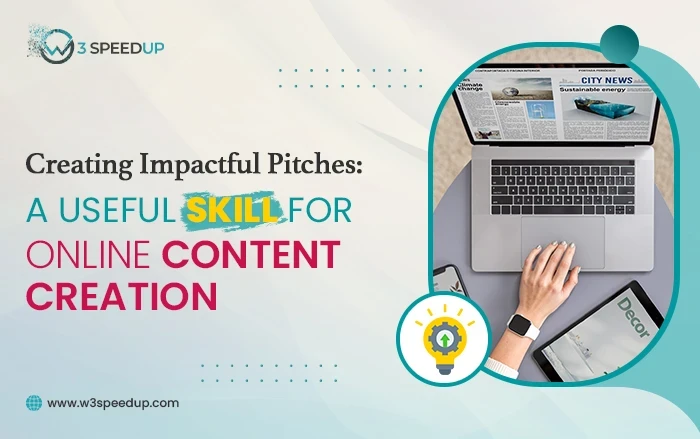Content developers usually put more emphasis on gaining online visibility. As such, many of those involved in creating web pages and other forms of online content spend less time and effort on persuasion. This is not to say that prioritizing online visibility is wrong. However, it is preferable when persuasion is made an integral consideration in content development.
Learning from pitch deck design
A pitch deck is a brief presentation designed to convey vital details of an idea and solicit a positive response. It is a prominently visual presentation that makes it easy to highlight important points and direct the attention of an audience to the information they need to see.
Pitch decks are usually presented during meetings, conferences, and presentations to potential investors, partners, and stakeholders. However, it is possible to utilise the concept of pitch deck design in online content publication. A pitch deck designer can impart useful insights in creating attention-grabbing and compelling online content and presentations.
Here’s a rundown of the ways pitch deck design principles help put out impactful content online.
 1. Capturing audience attention effectively
1. Capturing audience attention effectively
On average, adults have an attention span of roughly eight seconds, and they only get to read around 28% of the texts they see on a web page. These are important numbers to take into account when creating websites and online content. Long blocks of paragraphs are unacceptable. It is advisable to avoid having too many details and images on a page. These page elements can make it difficult to pay attention to the most important information site visitors should see. Images help draw attention, but too many of them can become a distraction.
 2. Keeping things short, simple, and impactful
2. Keeping things short, simple, and impactful
It is tempting to write to impress and create web pages with all the bells and whistles. However, these are hardly the key to drawing eyeballs. Website users rarely pay attention to writing styles and technically advanced page features. In most cases, they focus on interesting details, such as interesting stats and facts. They also respond to psychological triggers such as scarcity, urgency, words of authority, and words and images that appeal to emotions. The goal is to leave a good impression, and this is difficult to achieve with highfalutin texts.
 3. Clearly targeting audiences
3. Clearly targeting audiences
One of the key points to remember when designing effective pitch decks is knowing and understanding audiences. Everything should be created in line with the inclinations or preferences of the target audience. The colours, text styles, as well as the choice of images should appeal to the intended audiences. In some cases, it would be necessary to conduct studies or user preference surveys for this. Content can be designed to be neutral. However, to achieve the best impact, it is better to create content that is tailored to specific niches or groups of audiences.
 4. Making wise use of images
4. Making wise use of images
Pitch decks are highly visual presentations, but this does not mean that having more images is better. In the context of creating online content, it is vital to make purposeful use of images and other visual elements. Images should serve important functions. It is unnecessary to include multiple photos on a page if one or two are enough to demonstrate a point or attract the attention of an audience. Adding unnecessary borders, backgrounds, icons, animations, and image blending effects can have undesirable outcomes. Visual elements should not be added just because they look good but because they serve a purpose in enhancing content effectiveness.
 5. Ensuring consistency and alignment
5. Ensuring consistency and alignment
Moreover, the images, text styles, and layout of pages should be consistent throughout an entire website. They should also match the theme of the site and the target audience. Colours should harmonise. The typography used should be coherent. They have to support the main goal of having a website that raises brand awareness and convinces prospective customers to make a purchase.
 6. Using effective call-to-action
6. Using effective call-to-action
Call-to-action or CTA is an instructive line that seamlessly appears alongside page elements and the text content of a site. It can be a text link, button, image, icon, banner, or plain text that tells a site visitor to do something like placing an order or subscribing. Pitch decks may not have explicit calls-to-action, but they often imply the response a presentation is trying to solicit. In online content, CTAs can be added everywhere, but it is important to practise restraint and be subtle in asking visitors to do something.
In summary, many understandably regard online content creation as more of a technical undertaking. Website developers come up with fast-loading and bug-free pages. Designers present layouts and graphics that catch and hold attention. Writers produce texts that satisfy search engine optimization standards. However, it is also important to produce web pages and online content that are compelling and impactful.
 Christmas Mega Sale – Enjoy Up to 50% OFF on Every Plan!
Christmas Mega Sale – Enjoy Up to 50% OFF on Every Plan! 


